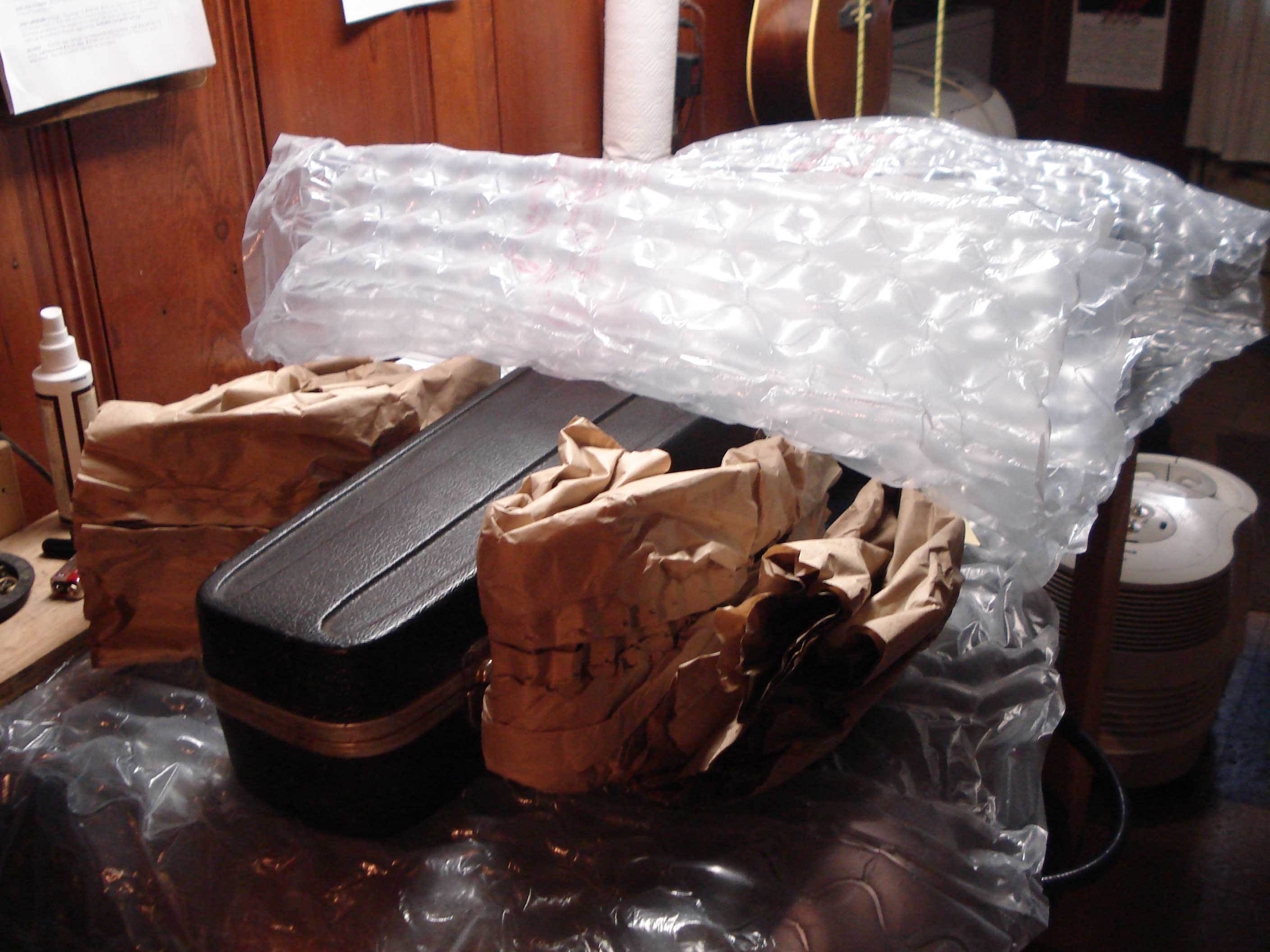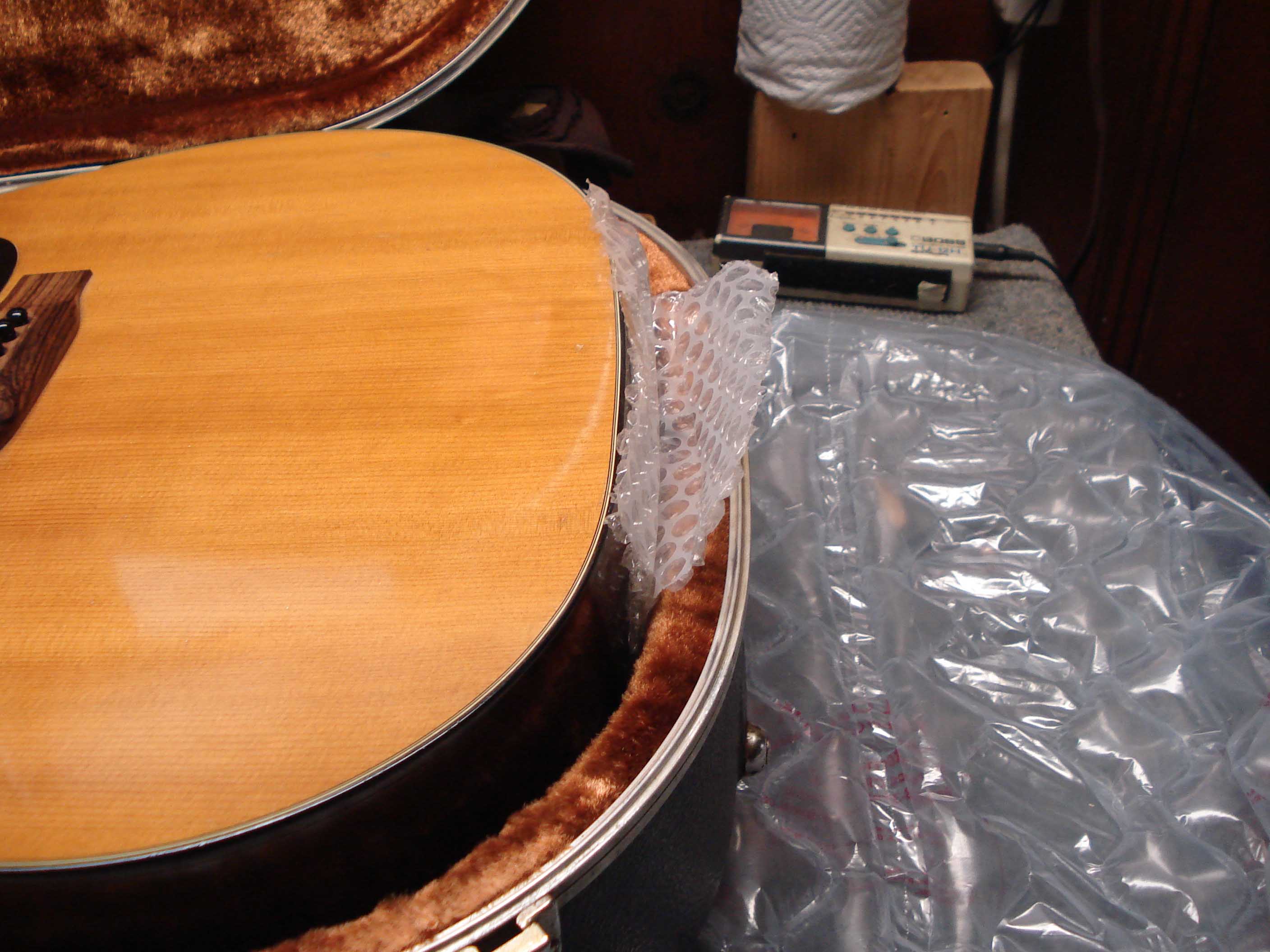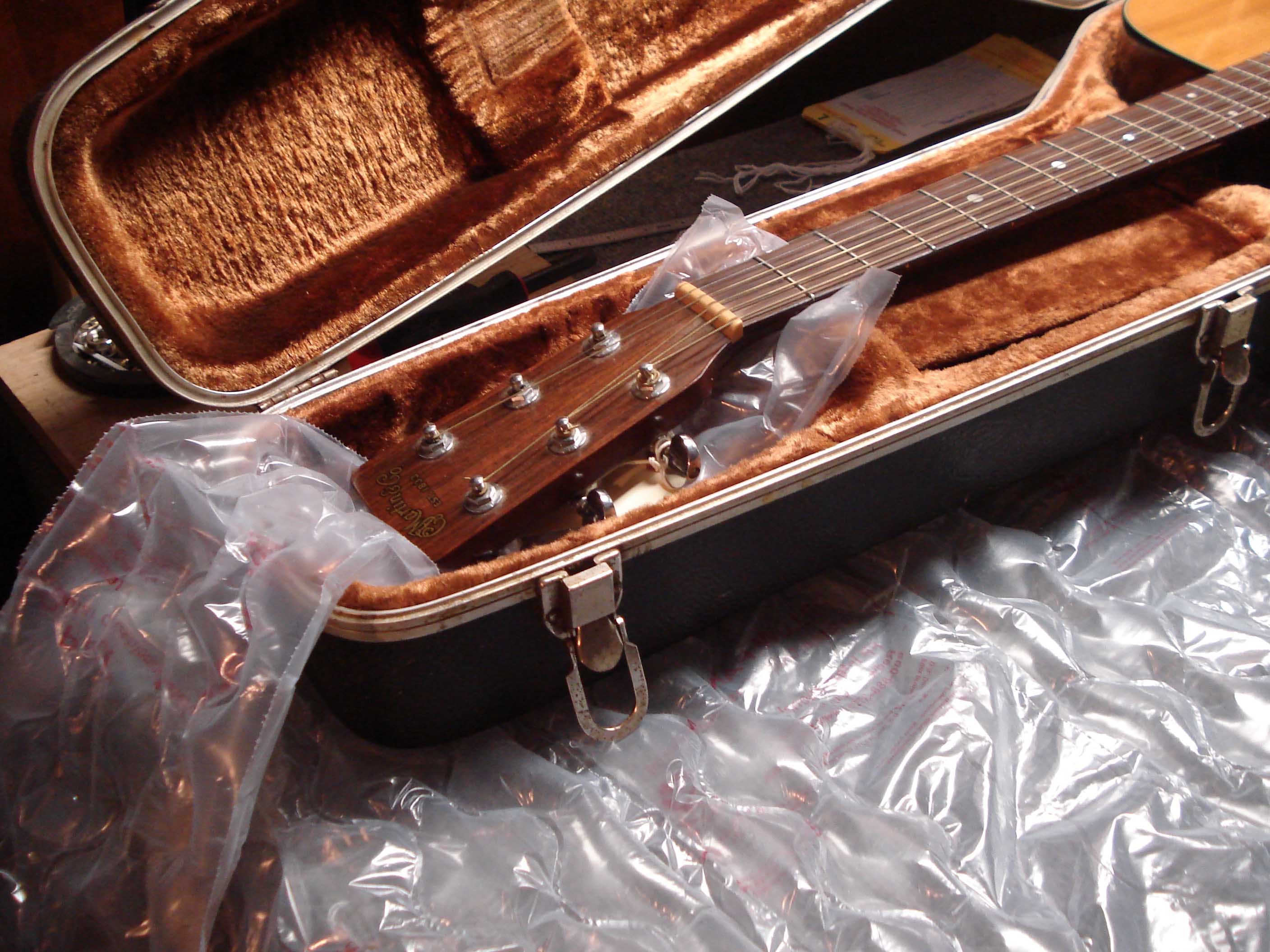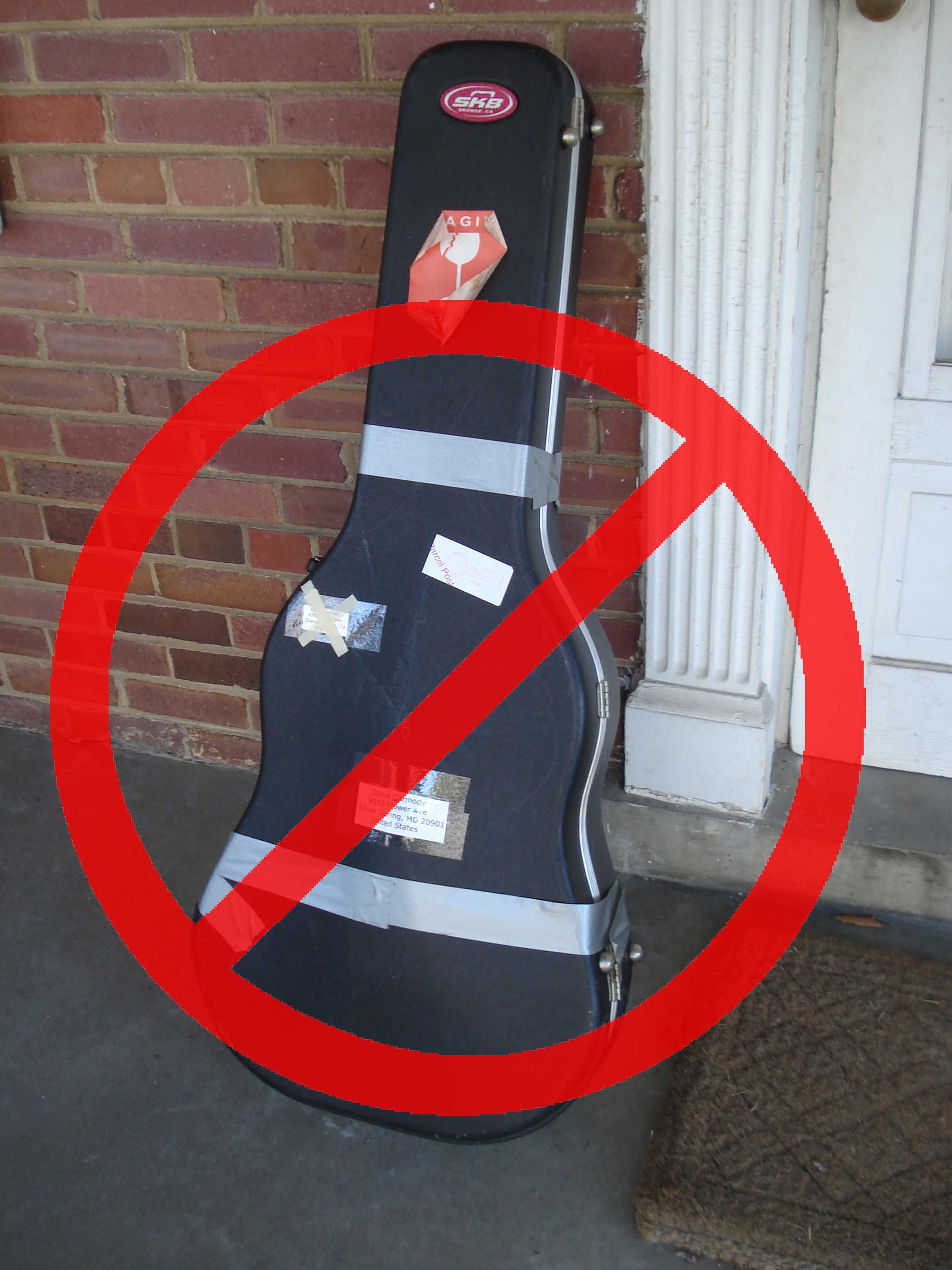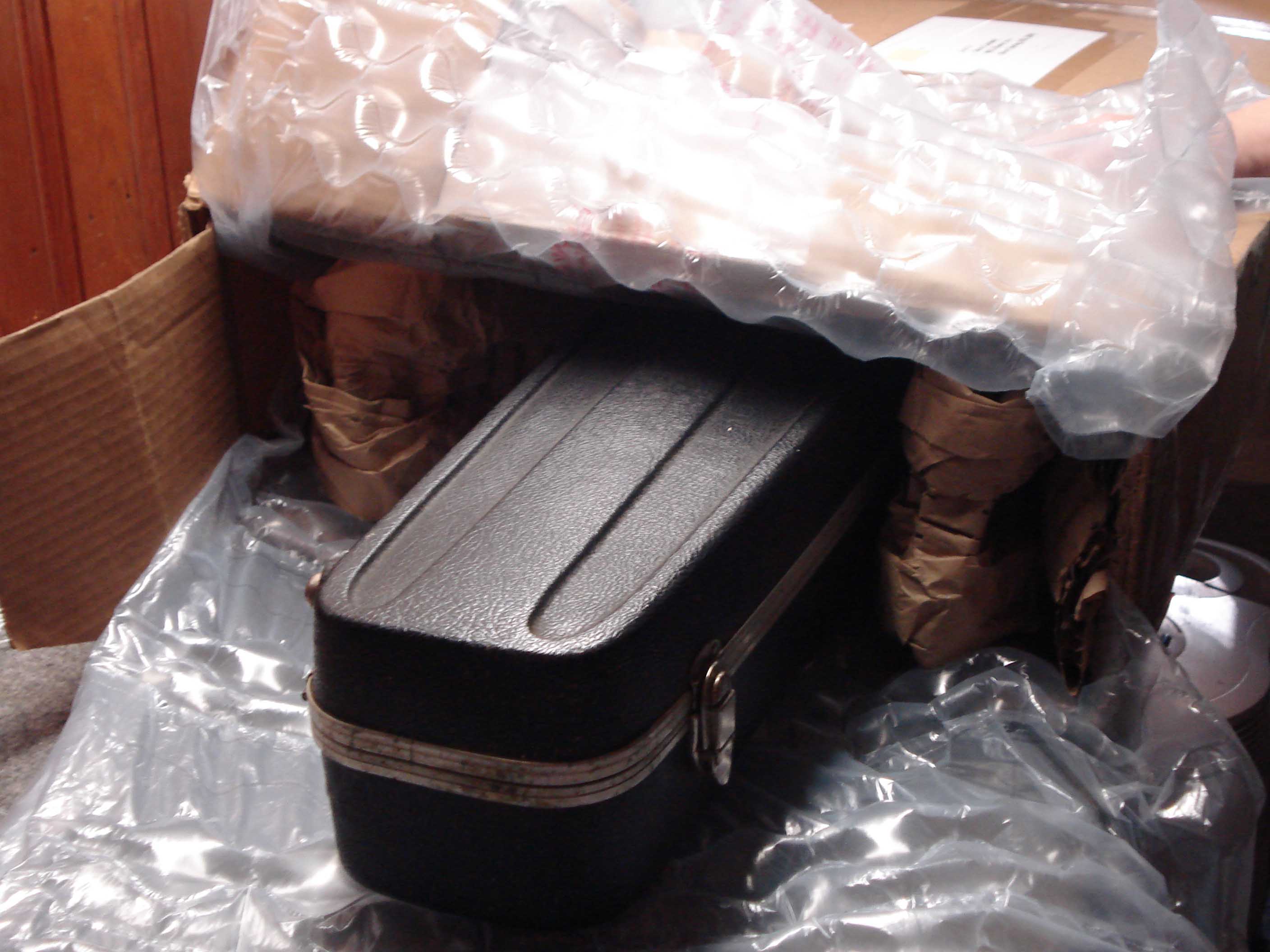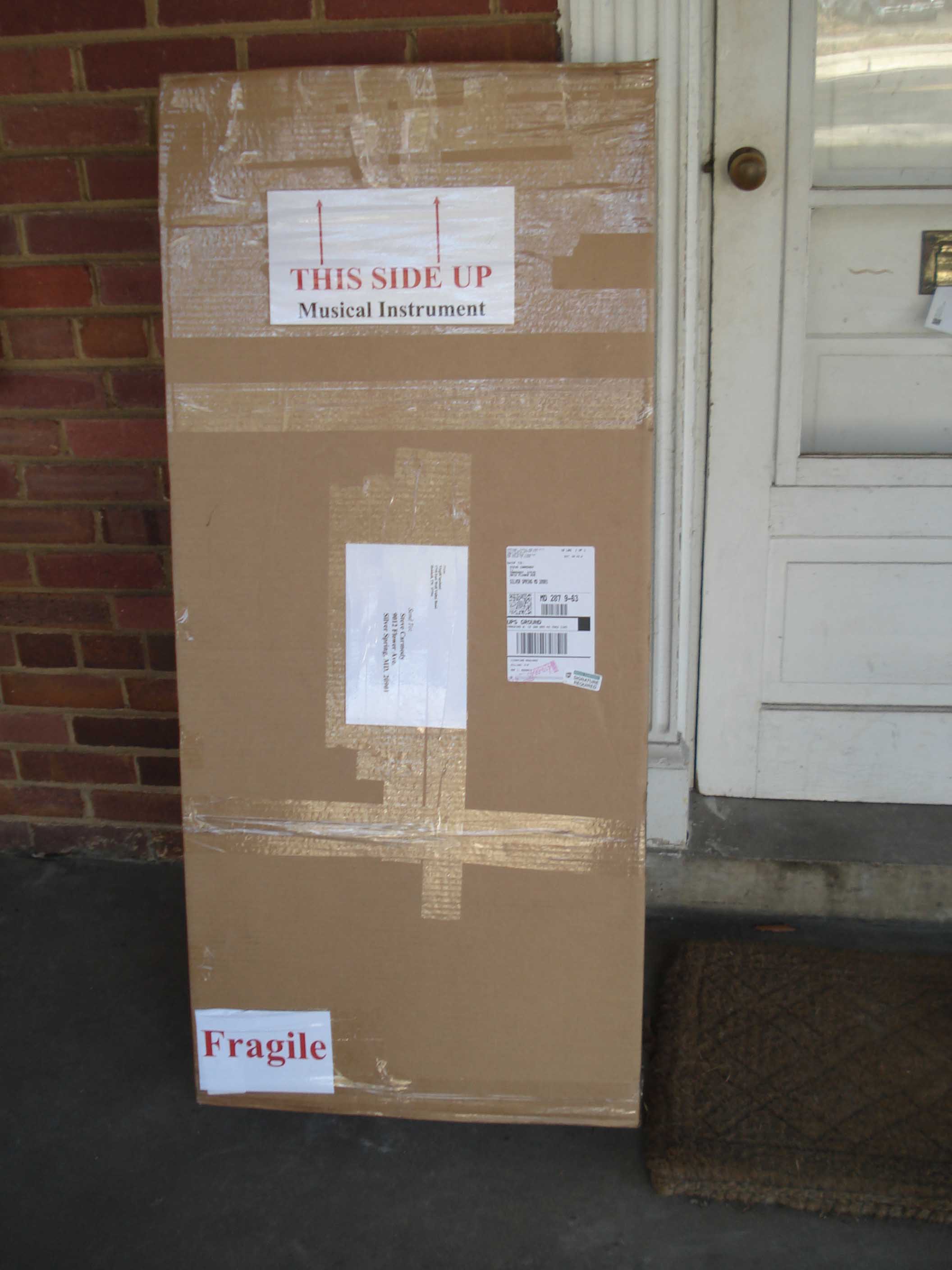|
| Repair Articles |
|---|
| Ask The Repairman |
| Repair Blue Book |
| Hardware Parts Accessories |
| Electronics |
| Guitar Wood and Kits |
| Tools |
| Friends |
|
|
|
|
|
SHIPPING GUITARS SAFELYCopyright 2009 Steve Carmody
More and more people are buying and selling guitars online these days, and there is an important aspect of a long distance deal which can make or break an other wise good transaction- safely shipping the instrument to its new owner. Whether you are the buyer or the seller you want the guitar to arrive in good condition. In this article I will outline some important elements to be considered when shipping guitars. PACKING THE GUITAR IN THE CASEProbably the most important consideration is to keep the guitar from moving inside the case. You can do a fine job of packing the case in the shipping box, but if the guitar is improperly packed in the case, you may still have a damaged guitar when it arrives at its destination. While some cases have plush padded interiors, many don’t. Regardless, check the fit of the guitar in the case. It shouldn't move around when the lid is closed. If it does, crumpled paper or bubble wrap should be used to fill the areas around the body of the guitar. It should not be compressed by the fill, but the guitar should not move in the case. It should be pointed out that soft plastics such as bubble wrap can react with nitrocellulose finishes( as used on Martin,Gibson, and many vintage guitars) so paper is best in these cases. If bubble wrap is used on guitars with nitrocellulose finishes, it should be removed immediately upon unpacking the guitar from the shipping box.
If there is room inside the case around the bottom end of the guitar body, a fill in this area can be a guitar saver. Damage to the lower bout, resulting from guitars being dropped on end, is not uncommon. Also remove the endpin if you can , and place it in the pocket of the case.
At the other end of the case, the area under and over the headstock should filled so that the headstock cannot easily move up or down. Headstock cracks often happen when the guitar falls face or back down on the ground. In these cases, the neck, which is usually supported around the 5th fret by a riser inside the case, snaps forward or back at the headstock and the weight of the tuners snaps the neck near the nut. This is especially true of guitars with the heavy Grover Rotomatics (think mid-1960’s to early-1980’s Martin’s). If you have the gumption, and particularly if the guitar has these heavy tuners, removing the tuners, wrapping them in newspaper and packing them in the storage compartment of the case, can be very good insurance against a break. If you leave the tuners and strings on, there is no need to fully de-tension the strings. Indeed some people feel that it is better to keep the tension up, saying that the tension from the strings actually holds the headstock more firmly in place. It seems logical though, that if the guitar were to fall forward, the tension of the strings might increase the likleyhood of the headstock snapping. The best insurance would seem to be that if the headstock is stabilized with crumpled paper or bubble wrap, as mentioned above, that the tension of the strings is less of an issue. PACKING THE SHIPPING BOX
While a guitar benefits from travelling in a properly fitted case, a hard-shell guitar case is not a shipping container, The one possible exception to this would be specifically designed “flight” cases, such as those made by Calton and others. If you didn’t pay 600.00 dollars or more- just for your case- you don’t have a durable flight case. Even if you do, while they are probably able to withstand the punishment of cargo travel, a shipping carton should still be used. “Cargo” is a good word to invoke here because shipping a guitar is not like placing it in the back seat of your car and driving across town. Guitars that are being shipped by any of the major carriers become cargo. They will be loaded on and off trucks, stacked with (above and below) other containers, travel in non-climate controlled unpadded compartments over all types of roads, through a variety weather conditions. And despite the best intentions of the shipping company employee’s, any given item may take a spill during the course of its trip. The goal, therefore, of properly packing a guitar in a shipping carton is to best enable the guitar, regardless of whether it is in a hard or soft shell case, to be essentially suspended inside the box. To do this you need some air space between the outer shell (the cardboard box) and the guitar case. For most guitars you will need a corrugated cardboard box of approx. 50x20x10. This will allow about 4 inches of potential air space around the case, which will then be filled with an airy/cushioning material. If you are only going to be shipping one guitar, you might be able to get a shipping box from your local music store. If you are lucky you will get a Taylor shipping box. The Taylor company has designed inserts that fit at the top and bottom of the box to suspend the guitar case a few inches from either end of the box. These seem to be very effective in protecting guitars from end impact (though they do nothing to protect the front and back faces of the box). Nevertheless, if you come across a used box which has these inserts, use it/them. But don’t be surprised if the music store is reluctant to share(or sell). These days, most stores are also shipping guitars out on a regular basis themselves. If you do get a pre-used shipping box, there is an important consideration besides the size- the condition. A box that has been used too many times isn’t going to provide the stiff outer shell that is necessary for creating an ideal shipping container for a guitar. So make sure that if you get a pre-used box, that it is sturdy. If you can’t find a suitable box from a music store, never fear, guitar size shipping boxes are for sale at most UPS stores. (Standard guitar size would be 50x20x10.) I was quoted $27.50 from the store near me for 1 carton. Also, for those that may be shipping a couple of guitars, the Uline Co. sells a guitar shipping box (product S-4922) for $ 7.00, but there is a minimum order of 5 boxes. Here is the page where you can find guitar sized shipping boxes: http://www.uline.com/ProductDetail.asp?model=S-4922 Even if you pay $30.00, a proper size box is a must when shipping a guitar. PACKING MATERIALS
There are three common materials used to fill this space between the case and the walls of the box- crumpled paper/newspaper, bubble wrap, and packing peanuts. Depending on who you talk to, all of these fillers are variously and individually recommended or discouraged. The concern about bubble wrap is that it may only take a single impact to pop the bubble(s), after which there is no protection. The concern with peanuts is that they tend to compress as they settle in the box and become more densely packed, diminishing the desired air cushion (plus they are messy). It should be noted that crumpled paper could also suffer from the same problem if compressed too much. In my opinion, packing peanuts may be the worst choice because of the fact that they are just plain messy to deal with. The best case scenario might be crumpled paper or bubble packing, or a combination of the two. As mentioned above, some boxes have the inserts used by the Taylor company. If you get one of them and the inserts are sturdy and in good shape, you won't need any other fill around the case. The pros and cons of each possible filler material can still be debated, but you have to ship your guitar. The important thing is to do your best at the outset to create a maintainable air space between the guitar and the outer carboard box shell. OTHER CONSIDERATIONSUPS or FedEx or USPS ?In discussions on the subject of shipping guitars I have heard each of the major carriers UPS, Fed Ex, and the USPS mentioned as the carrier not to use because they damage instruments. I think that what we learn from this range of opinions is that an instrument that is being shipped can be damaged by any carrier, and this is why careful packaging is so important. The last thing you want to be involved in is making an insurance claim for a broken guitar. It is tedious, time consuming and the guitar, even if repaired, will always be a guitar that was once broken. BY LAND OR BY AIR ?Some people have suggested that keeping the travel-time as short as possible is the safest option, therefore guitars going long distances should only be shipped by air. Others suggest that air travel has the most potential for disaster because of drops in temperature and humidity, possible rough handling, and more on/off loading. Once again, proper packaging is probably the best recourse, regardless of shipping method. DAMAGE INSURANCERegardless of which method of shipping you use, if you are a buyer you should always ask for, and be prepared to pay for, damage insurance for the full sales value of the instrument. And if you are a seller you should insist on it also. This is no guarantee of being reimbursed if the guitar is damaged in shipping, but relative to bearing the full cost of replacement, the cost of insurance is a small price to pay. Additionally, some shippers will label items that are insured, so their employees are aware of the need for careful handling of these items. No matter what some might say, shippers don’t want to damage your items, but still, buying insurance is a must, especially for valuable and rare instruments. SECURITY AND LABELINGClear, bold ( and polite) labels, saying FRAGILE, THIS END UP, PLEASE DO NOT DROP, are always a good idea. In my opinion, if the guitar is not a one of a kind, including a label that says Musical Instrument is not a bad idea. I would point out though, that some people say that one should not label a package as Musical Instrument because it might more likely inspire theft. If an instrument is irreplaceable I accept that this might be a good idea, but otherwise I am not so concerned. WEATHER
If you have a choice, don’t ship an irreplaceable guitar during the height of summer or the dead of winter.
Almost universally, shipping trucks are not climate controlled, so the cargo is subject to the
variances in weather that the truck is travelling through.
CONCLUSIONS
The best insurance of having a guitar arrive safely after shipping is to carefully pack it in its case, and then properly pack the case inside a sturdy proper size cardboard box.
Steve Carmody is an independant guitar repairman and luthier with a shop in Silver Spring, Md. He has been doing guitar repair and restoration full-time since 1990. Questions about this article or anything else related to guitar repair? Send e-mail to - GuitarRepairShop@aol.com |
